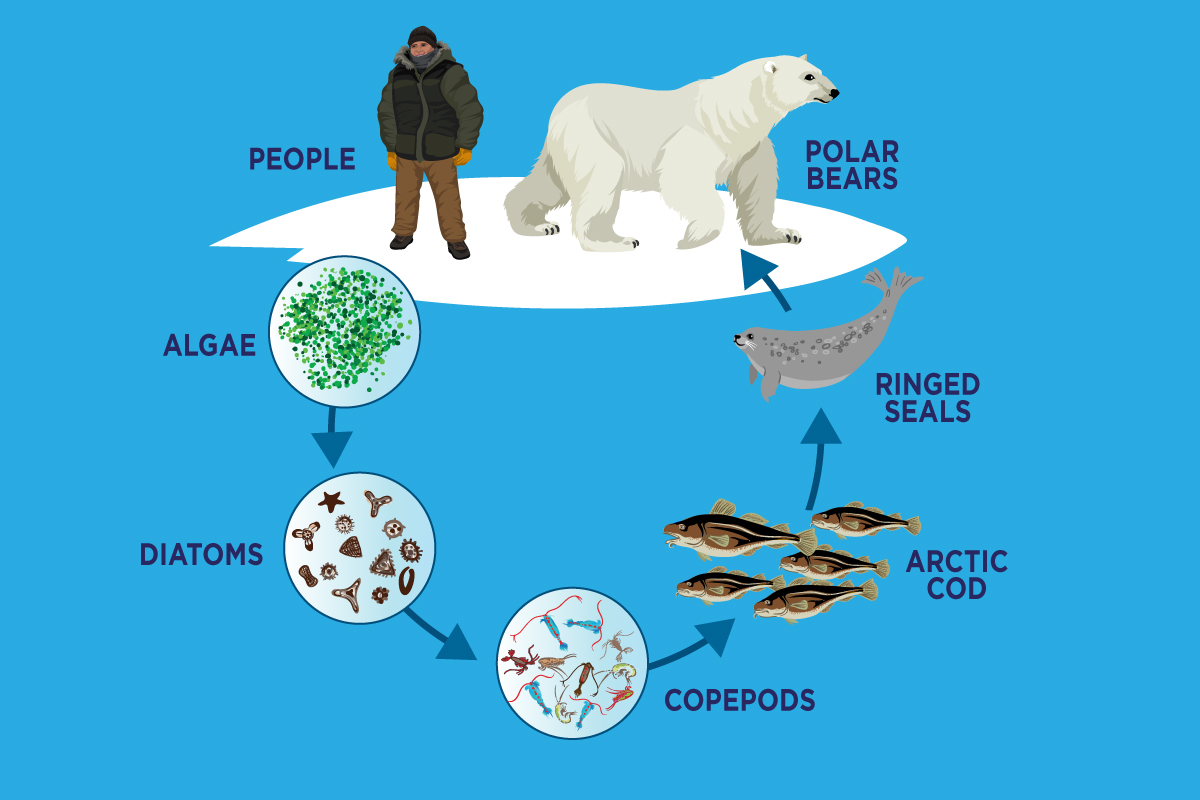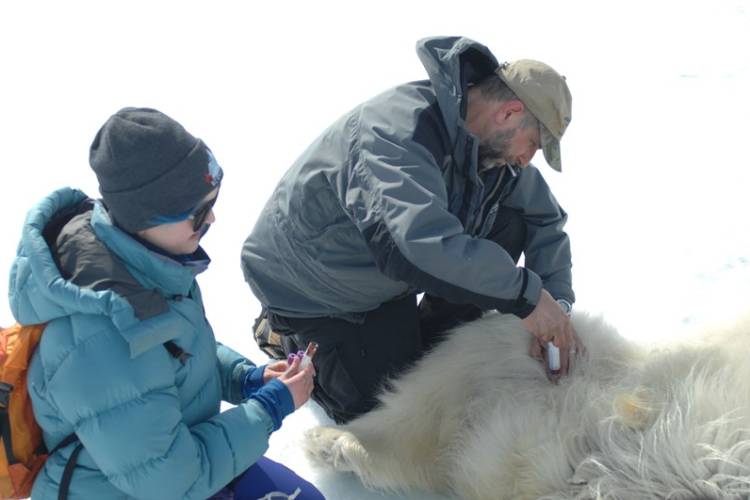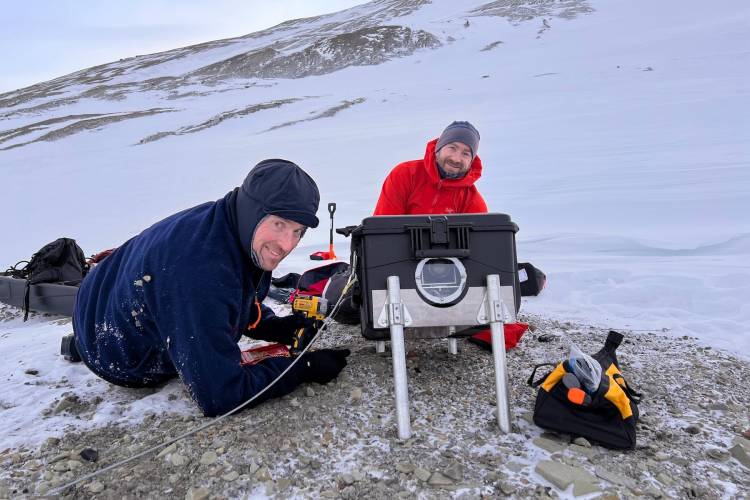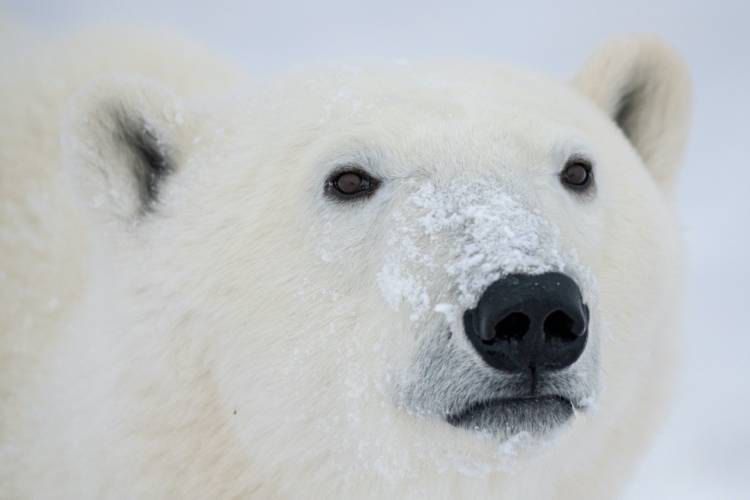As part of a new study on polar bears, my colleagues and I recently discovered hundreds of new contaminants in blood samples from bears in Hudson Bay and the Beaufort Sea. The new pollutants were in 13 different types of chemicals that include break-down products of known pollutants with both chlorine and fluorine.
What makes this study so worrisome is that some of the chemicals are of unknown origin. They’re not documented as known pollutants and we don’t where they come from, although most are likely of industrial origin. High-tech detective work from chemists gave us the new insights, and we recently published our findings in the journal Angewandte Chemie (Applied Chemistry).
The polar bear’s position at the top of the food chain puts the bears at risk of accumulating pollution. Their reliance on a high-fat diet amplifies the problem. Many of the contaminants that humans release into the environment are lipophilic or “fat-loving.” These pollutants enter the food web through algae or shrimp-like invertebrates. As these species become prey to animals higher up in the food web, the pollution bioaccumulates.

How does this work? A single alga may absorb one pollution molecule, and then a shrimp-like amphipod eats a thousand algae. Even if only a few of the algae have pollution, that amphipod might accumulate 10 or 100 pollution molecules. Next, a hungry Arctic cod eats 100 amphipods and then gets eaten by a ringed seal. You get the picture. At each step up the food web, the amount of pollution increases.
What does pollution mean for polar bears? Most would likely agree that adding hundreds (maybe over a thousand?) chemicals of human origin into a polar bear isn’t a good idea: It would be naïve to think there would be no effects. What we do know is that pollution in polar bears affects their immune system, hormone and vitamin A levels, growth, development, bone density, and organ structure. It may also affect cub survival and behavior. With so many pollutants, it’s impossible to know which are the most damaging or if any of these new ones are particularly bad. We know pollution affects individuals, but the effects on populations are less clear.
















